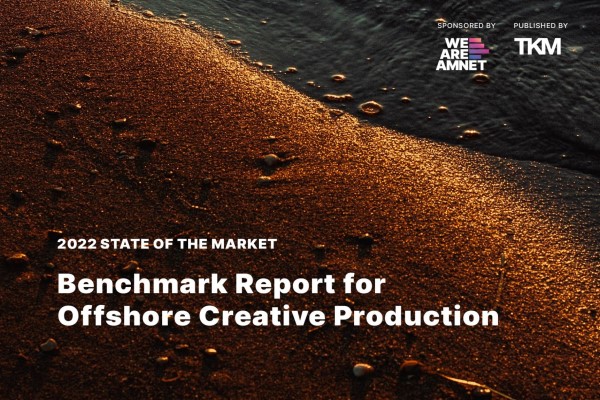The so-called Great Resignation and current talent shortages across the US and Europe have accelerated changes already underway industrywide as brands look toward new models of creative production.
We Are Amnet’s 2022 Benchmark Report for Offshore Creative Production sheds intriguing light on the current state of offshoring, as brands continue to reevaluate their production models. In-house agencies, external agencies and offshore partners all feature in the provision of a rising quantity of digital, mobile, social media and direct-to-consumer web solutions. But it’s the maturity and efficiency of the offshoring model that provides some stand-out numbers.
Maturity of an industry
The offshoring model is not new; 73% of companies surveyed currently offshore creative production or post-production services and 48% have been doing so for five years or more. The principal reason in support of offshoring remains its outstanding cost-saving potential. In fact, 78% of respondents polled cited this benefit. Access to flexible or additional resources and scalability are also featured prominently.
One notable statistic has likely been driven by industry and labor-market changes brought about by the pandemic with 30% of respondents offshoring due to limited in-country resources. Finding the talent for in-house teams is, it appears, increasingly difficult and offshoring is a viable solution.
Offshoring models
Not surprisingly, given the nature of creative production, most brands keep the number of offshoring partners they work with at one or two. While specialist services may require additional partners to be brought on board, many brands use their offshore collaborators as extensions of the in-house team.
That means they want offshore partners they can trust, who get to know the brands and related requirements, taking on the repetitive tasks so the in-house team is free to focus on original creative work. Given that in, it’s no surprise that Smartshoring® is a fast-growing and trusted model for offshoring. With 83% of respondents in agreement, the hybrid model of Smartshoring has become an increasingly popular solution.
Most popular offshoring locations
India remains by far the most popular offshoring destination, with 70% of respondents having a partner there. India’s mature infrastructure, deep talent pool, supportive higher-education institutions, competitive rates and ideal time zone make it comfortably the number one offshoring locale. This is particularly true for North America and Europe.
However, other countries are making their mark led by Poland, South Africa and Mexico, and joined by Brazil, China, Malaysia and others. Brands looking for offshore partners can now count on native linguists and trained talent in almost every time zone.
Benchmarks for success
Cost savings and convenience are not the only benchmarks used to measure the success of offshoring efforts. The importance of quality work continues to rank higher than any other measure of offshore creative production success with 76% of respondents citing its importance. And that figure has risen since 2021. Cost savings come next, which is no surprise given offshoring’s typical savings of 40–60%. This is followed closely by forming trusted relationships, important to half the respondents and a measure of how offshore teams are seen as integral to the overall effort. Other measures of success include hitting deadlines, leveraging new technology, and flexible, scalable resources.
How leaders see the offshore industry evolving
The impact of the pandemic saw marketing budgets slashed by almost half in some cases. It also changed consumer behavior to provide new opportunities to marketers, particularly in the D2C category. As brands look for more efficient, sustainable and digital-first models to respond to emerging trends, 78% of respondents envisage added investment in creative production.
Offshoring is likely to see a significant percentage of that investment. Though with lingering misconceptions about offshoring, there will always be a measure of debate. Our 2022 Benchmark Report for Offshore Creative Production makes an undeniable case that offshoring, and the Smartshoring® model in particular, are not only here to stay but are growing in importance and popularity as our industry continues to evolve.
To download the full report, click here.

